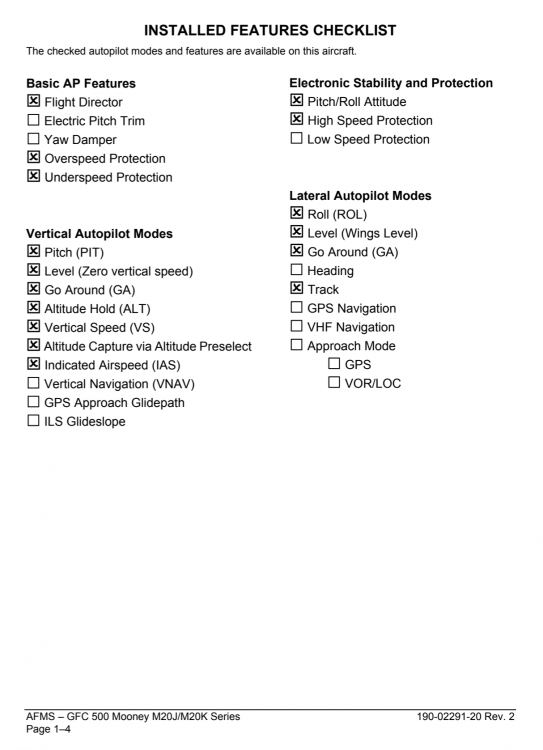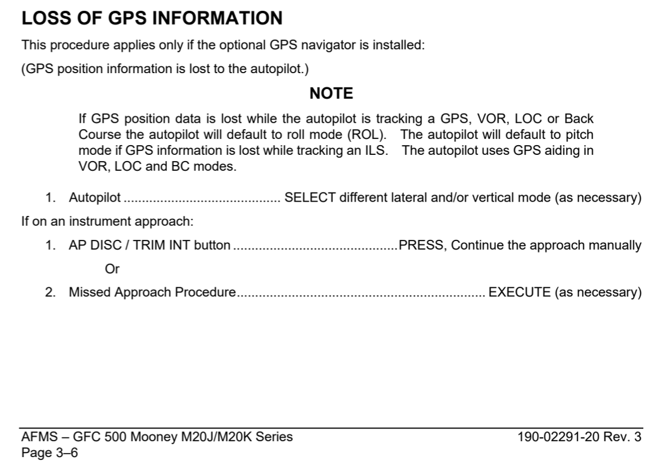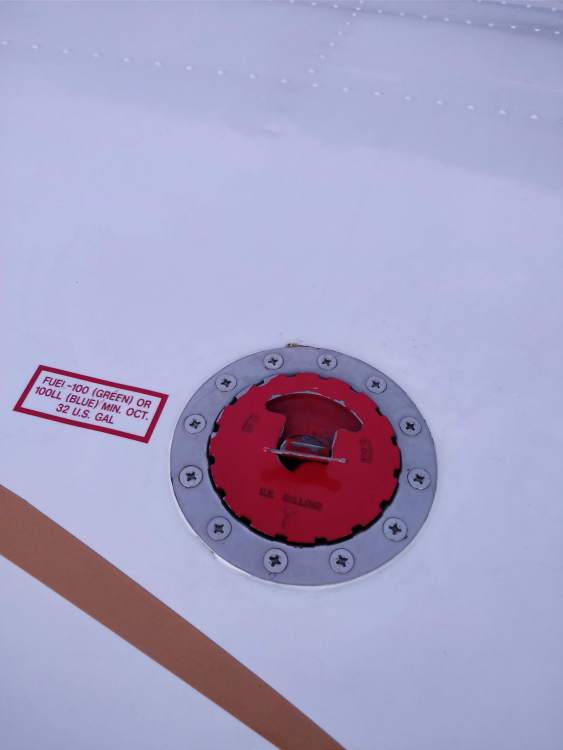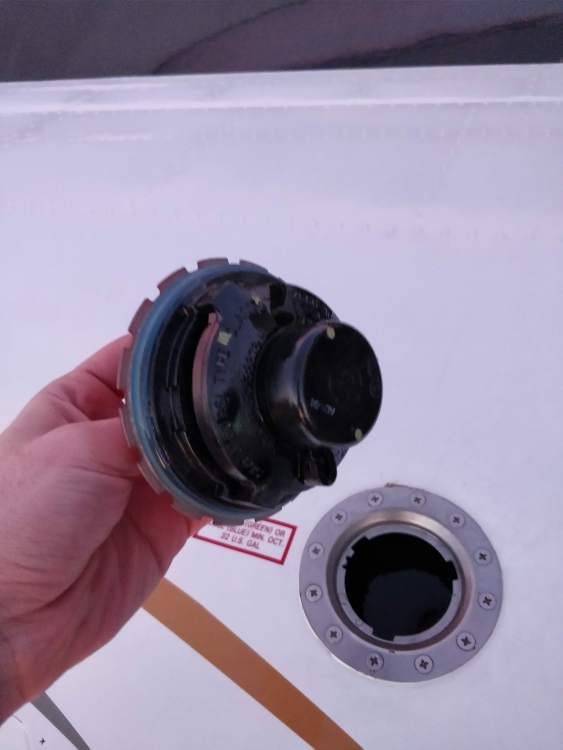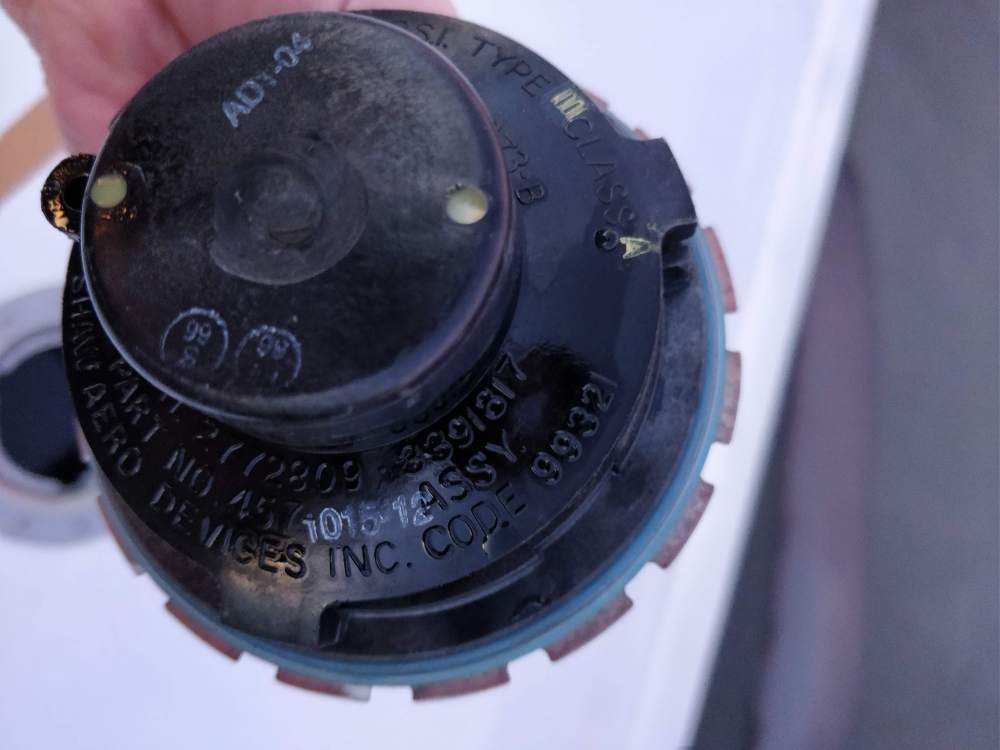-
Posts
162 -
Joined
-
Last visited
-
Days Won
1
Content Type
Profiles
Forums
Blogs
Gallery
Downloads
Media Demo
Events
Everything posted by adverseyaw
-
Looks familiar. I had similar symptoms (clogging injectors) and found a similar amount of debris in the strainers. The bits that were causing the most trouble seemed like small sand particles -- very hard, but not metallic. My approach was to: 1) remove the debris from the tanks, and then 2) clean every component that may have debris stuck in it. In the end, that amounted to: Thoroughly clean the filters and screens Disassemble and clean all of the injectors Open the panels on the tanks and clean them out with terry cloths. This is what stopped the debris from entering the fuel system Overhaul the flow divider and fuel servo as a precaution. My overhauler said they found particles and rust traces, so was glad they were cleaned up. I burned out my fuel pump in the process so had to upgrade that It ended up being about $6k in overhauls and labor, probably closer to $4.5k without the pump. Sorry to hear you're going through the same. Hopefully it will be less involved for you, but the knowledge that I got everything out of the fuel system is invaluable.
-

Another Powerflow exhaust question-cooling
adverseyaw replied to Tim Jodice's topic in Modern Mooney Discussion
Most (all?) IO-360s were set to 25 degrees prior to the 1970s, even those with regular mags. Duplex mags came out during this period, and also got the 25-degree timing. Later on, traditional mags and 20-degree timing were in style, and Lycoming issued a SB on how to change the older engines with traditional mags to 20 degrees as well. I've heard the service instructions do not apply to engines with dual mags, but I haven't looked closely into it. My M20J has an IO-360 with the duplex mags, and it runs on the hotter side. When I got the plane, the mags were (poorly) timed to 21/22 degrees. I've had it timed to both 20 and 25 degrees, and it did not make any difference in the CHTs. This bucks the conventional wisdom, but it's what I've experienced. I've got the plane timed back to 25 degrees, what's on the data plate, and just monitor temps in climbs. -
Reading back to the original question, I think using the FAF is the best way to dial in what a 3-degree sight picture looks like. If your goal is to learn to identify and fly a 3-degree visual approach, those should be treated as separate skills. Identify a descent point so your approach is 3 degrees (this is the FAF technique @Andy95W described) No matter which descent point you pick, fly a constant-descent approach to the runway FAF and an ILS are the only way I can think of to achieve step 1 with precision. You can use your FPM to see if you're way out of bounds but I don't think it will help you dial that sight picture in. Step 2, the actual descent, is best done visually. You don't want to use a descent angle for step 2 as any inaccuracy in step 1 or in your groundspeed estimate will put you increasingly off your glideslope, which defeats your goal. In addition to the rules of thumb for calculating FPM, Advisory Circular 120-108 includes a table of constant descents (Appendix I, Figure 3) that will give you precise numbers . In reality, wind gradients throw all of this out the window, and those descents are usually only used to ballpark an approach until the pilot can get back to reliable indicators (DME, marker beacons, and altitude). https://www.faa.gov/regulations_policies/advisory_circulars/index.cfm/go/document.information/documentID/877339
-
I've talked with two A&Ps who run MSCs, and two current Power Flow owners about their experience with PFs installed in M20Js. MSC A&P #1: half of owners like them, half of owners say it didn't make any improvement and isn't worth the money MSC A&P #2: most owners like them M20J w/ Power Flow owner #1: worthwhile, especially for improvement in CHTs (see links below) M20J w/ Power Flow owner #2: didn't make a huge difference, not worth the hassle From this small sample I agree with MSC A&P #1: half of M20J owners like them, half of owners say it's not worth it. Owner #1 did a great writeup on MS a while back. === BEFORE === === AFTER ===
-

Pireps on firewall forward HP + STC
adverseyaw replied to Kwixdraw's topic in Modern Mooney Discussion
It took me a bit longer than I'd like, but I was finally able to gather enough performance data on this STC to put together an assessment. I've got a summary posted at the link below. The short version is that above about 9k feet, I get lower fuel consumption than what the POH specifies, or better speeds, or both. Below that, I tend to get neutral or slightly worse numbers. (Most of the POH's I've used depict best-case performance achieved by test pilots, and achieving them can be spotty. So I don't necessarily take the neutral/worse numbers as a performance deficit, just a lack of improvement over stock.) -
I've got a 1978 M20J with the Firewall Forward "Horsepower Plus" STC SE2741NM. This is an IO-360-A3B6D with the stock dual magnetos and no other engine performance upgrades of note. I do have GAMI injectors which got me to a spread of 0.2GPH and reduces tendency to run rough, especially at altitude. This STC limits propellers to the stock McCauley so that's what I'm running. This engine has about 350 hours on it since overhaul by FF. No real issues with the engine so far. The airframe only has a couple of speed mods, notably flap/aileron seals, but it still has the multi-piece belly. Usually I fly this airplane at Economy Cruise (low altitudes, up to about 9000 feet) and Best Power Cruise above that. Ram air is open on all runs. I keep the cowl flaps closed and make sure the CHTs don't get out of hand, and in all cases below I've let the airspeed and temps settle for at least 20 minutes before recording numbers. I haven't been writing down degrees ROP/LOP. Weight on these speed runs is around 2500 pounds so I'm averaging the 2300 and 2740 speeds in the POH. RPM, MP, and fuel flow are measured with a JPI 800. I've got more runs than this but picked 4 that I could match to the POH. The TL;DR on this performance for this STC is that starting around 9k feet, it gives me lower fuel burn, and sometimes better speed. Below that, it performs like a stock engine: at or slightly below factory numbers.
-

2020 Northwest Basic & Advanced Formation Clinics
adverseyaw replied to FlyTester's topic in Mooney Caravan
Any of the ones listed on the event are fine, they're all on the same block so transit is easy. Anecdotally I heard people were happier with the Holiday Inn than the Best Western. I'm a simple traveler and the Motel 6 worked great for me.- 9 replies
-
- 1
-

-
- mooney caravan
- northwest
-
(and 1 more)
Tagged with:
-
Very confusing. ROL mode is described independently of wings-level mode (see below). The Garmin tech confirmed that ROL mode would maintain bank. What you're describing is intuitively what I would expect the autopilot to do, although the sources say otherwise. Do you have a page number for that? I'd like to take back to Garmin for clarification.
-
I have a GFC 500 and fly in an area with lots of low overcast and a few military GPS interruptions every year. So I called pulled out my AFMS and called Garmin pilot support for clarification. TL; DR: the autopilot gives up when GPS is lost. Here's the page of the AFMS for M20J and M20K: Roll mode (ROL) maintains current bank. It is not a wing-leveler. Garmin pilot support confirmed this is the mode the 500 will enter on GPS loss when on GPS, VOR, localizer, and backcourse approaches. Pitch mode (PIT) maintains current pitch. Although the AFMS says the 500 reverts to PIT on ILS tracking, Garmin pilot support clarified that both the ROL and PIT modes are applied. When the autopilot mode switches due to GPS loss, the pilot can select a new mode, although Garmin pilot support says reselecting approach mode will kick it back into ROL or PIT. My interpretation is that when GPS interruption occurs while on a radio approach, the GFC 500 gives up and keeps the aircraft in its current attitude. Three things that are not clear to me (and which I plan to ask Garmin support if I have time this week): This limitation only applies if a GPS navigator is installed. Is the 500 capable of working without a GPS nav head? If so, why does this limitation exist? Which autopilot modes are usable during a GPS interruption? What annunciations accompany GPS loss and reversion to ROL/PIT? I assume it's just the tiny icons on the G5 but want to clarify.
-

2020 Northwest Basic & Advanced Formation Clinics
adverseyaw replied to FlyTester's topic in Mooney Caravan
@M20C_AV8R here's our May formation clinic -- come join! Odds are good @amillet will make it :-)- 9 replies
-
- 1
-

-
- mooney caravan
- northwest
-
(and 1 more)
Tagged with:
-
So much to respond to! @aeroHAWK 100 that's such a neat story. Would love to meet up sometime if you're game. Will PM you. @flyboy0681 I still don't have a lot of great data. One recent flight at 8,000 has me at 9.2GPH at 2350RPM, and I believe my TAS was around 145. One of my goals for 2020 is to record these numbers, and I've since bumped up my cruise RPM so should see an increase above those numbers. Note that this is with the stock prop. The STC requires the factory propeller -- it isn't authorized with an aftermarket prop. @exM20K the mod definitely helps, but I do find that keeping the CHTs in check on hot days is a real challenge. It's also placarded to 28.2"/28.5" of MP down low, which prevents use on the runway. The engine builders tell me that running it above those pressures at sea-level is the main cause for excess oil consumption. @Mooney217RN the Powerflow is on my list! Probably sometime this year, and I heard from Buzz that it really helps with CHTs, which would be a big improvement. I talked with both the Firewall Forward and the Powerflow folks and both felt the STCs were compatible.
-
@rcwagner and others, the 2020 schedule is now available.
-
-

Mooney landing gear geometry and landings
adverseyaw replied to PT20J's topic in General Mooney Talk
Yep, our mains are further aft of our CG than most other aircraft. This presents problems at low and at high airspeeds. At low airspeeds, we need comparatively more elevator authority to keep the nose high than, say, a Cessna. I find it's harder to modulate at the edge. At high airspeeds, above the stalling speed of the aircraft, it's really hard to get the airplane to stick to the runway unless you plant it on the pavement. Planting it means the airplane is descending (we'll say at 50-100FPM at time of touchdown) and the CG, which is way far out in front of the mains, continues downward after the mains touch, thereby causing the aircraft to pitch down and slam the nose before the descent is halted. Anecdotally, I've observed that flying with pilots who land fast will tend to hit the nosewheel harder than those who land substantially slower. The geometry is what really gets you in the high-speed landing. A by-the-numbers approach with touchdown right before stall results in the cleanest landings. One advantage of having mains that far back: I've never seen a Mooney tipped onto its tail after a snowstorm. -
Is this a recent change in the way the autopilot performs? My IIB wandered a bit and my avionics shop ran adjusted a few pots on the controller to dial up/down the gain on the various signals inside the unit. The adjustment process is fairly simple and is described in the maintenance manual. There could also be a component failure happening (in the autopilot or the DG/HSI encoder) but you can at least try the adjustment first. When I had my IIB fully adjusted, it would still wander a few degrees after a turn or encountering a crosswind in cruise. It usually took 10-20 miles for the oscillation to settle down. Like carusoam mentions, there are other threads on this.
-
@rcwagner stay tuned as we assemble the schedule. I'll post back here when we have it. @amillet great flying with you today
-
;-) Likely my CFII on the radio. We had a glider on the runway at Wenatchee as well. P.S. I checked the roster at the B2OSH clinic coming up, saw your name there, so looks like I'll see you soon!
-

IO-360 misfires at idle and low MP
adverseyaw replied to adverseyaw's topic in Modern Mooney Discussion
I've been chasing the induction leak theory and have had some success so far. After changing the intake gaskets and o-rings, and cleaning up the Precise Flight standby vacuum line and valve, we got the popping to stop at much lower RPMs and get the mixture to richen way up (so much that it barely ran). Clearly, I had big leak(s). I'll be testing the sniffle valve again this weekend to see if that's leaking further air. We only have a few more possibilities. One thing that tipped me off is that I can only pull down to 12-13" MP with the throttle at idle and 600rpm. I found a few YouTube videos showing IO-360s pulling more vacuum at idle. It may be I can only get it this low but high numbers indicate a leak is possible (not guaranteed, but worth investigating). -

IO-360 misfires at idle and low MP
adverseyaw replied to adverseyaw's topic in Modern Mooney Discussion
That's a good idea. We pressurized the intake already and it held pretty well. Would the gaskets still be likely even if we've preformed this test? -

IO-360 misfires at idle and low MP
adverseyaw replied to adverseyaw's topic in Modern Mooney Discussion
An overall update: I stuffed a bolt into the sniffle drain valve tube and ziptie'd it there. Ran the engine up but still misses at idle. No change. The plugs are Champion RHM-38S fine wires. My A&P pulled them a few weeks ago and said they were all clean. I'll check the resistance on them soon. -

IO-360 misfires at idle and low MP
adverseyaw replied to adverseyaw's topic in Modern Mooney Discussion
Interesting. This engine has only 50 hours on it but getting extra air into the cylinder would do this. Good idea, will check. Interesting. The mags were overhauled 50 hours ago, but something was faulty with them causing no ability to start. The prior owner had them repaired right before I bought the plane. Could be a lingering issue with the mags. No problem with hot starts, but there is some occasional afterfiring at idle. -

IO-360 misfires at idle and low MP
adverseyaw replied to adverseyaw's topic in Modern Mooney Discussion
I think I've got enough to go on at this point. Checking the sniffle valve and sanity-checking the plugs is a good start. Done lots of runups on one mag at a time, no change so far (RPM drop, EGT rise, but no change in misfiring). Haven't looked at condensors, but will see what I can do there. These are all great ideas. Essentially we're eliminating variables in each system: fuel, air, spark. Getting your input helps me find new variables I may have overlooked, like the sniffle valve, which could read fine during a pressure test but could open after it gets jostled by a bit of extra fuel. -

IO-360 misfires at idle and low MP
adverseyaw replied to adverseyaw's topic in Modern Mooney Discussion
Good idea. The gauge reads well into the green and the problem is present with the boost pump running. Yep, it's there at all mixture settings. :-/ I had the flow divider cleaned, reassembled, and bench tested as part of cleaning the debris out of the fuel system. The problem was present before and after the cleaning, unfortunately. -

IO-360 misfires at idle and low MP
adverseyaw replied to adverseyaw's topic in Modern Mooney Discussion
Yes! This is very similar to what I'm experiencing. Definitely the first thing I'll check. We haven't cleaned out that valve yet. Will try the sniffle valve and will look at the induction gaskets too. We pressurized the intake and didn't find issues, so I'm not certain it will be a problem, but good to know. ;-) Plugs: will check those next. Not sure what's in there but will probably lose Champions if I find them in there. Air: sniffle valve is the best bet so far. Otherwise no leaks we've been able to find (nor staining -- my A&P has been pretty diligent about that since we cleaned the fuel system). EGT: the probe is in good shape, as it reads fine when we swap connections with another cylinder. The problem is in the line or a connector upstream of the wire bundle. Still working on tracking that down. Runup: yep, I do the EGT check for mags. Good suggestion, my A&P thought the same thing and checked this twice after the servo went back into the plane. We had it even at peak RPM at idle cutoff. -

IO-360 misfires at idle and low MP
adverseyaw replied to adverseyaw's topic in Modern Mooney Discussion
I don't know. The guy I bought the plane from had trouble with the overhauled servo and sent it out for repair, but I'm missing that document. It may need to go out again. (I would like to pinpoint the issue before sending the mag out, but it's certainly a possibility.) The 1000-1700 was me running the engine up. Any idle time in the trace is time when it was skipping. (In the entire trace I probably had 5 solid minutes of idling.) Good point. I haven't run across the 6/1 second setting in my EDM 830 but will look again and see what I can capture. Will do. We've leak-checked most if it. Good points -- will check into the 1-second setting and will continue to plug away at the EGT4. Interesting. Will look into this. Thanks all!




